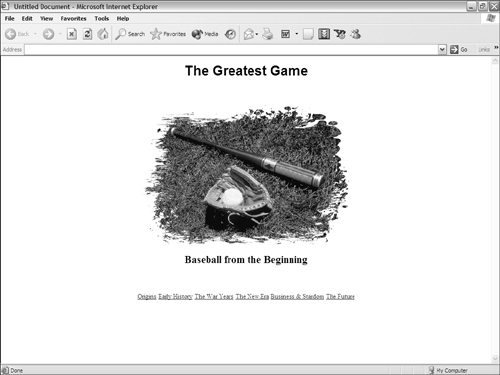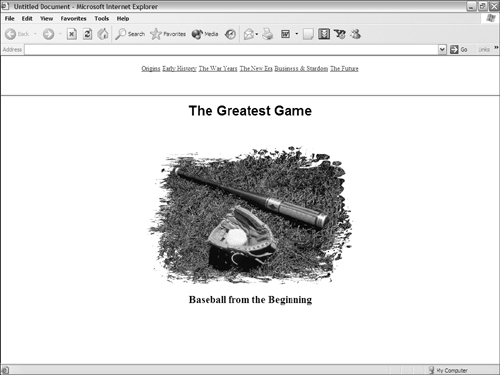Determining Your Web Page Structure
The two basic kinds of Web page structures are regular and framed. Regular gets better mileage on highways, and framed looks nice on a wall. No? Okay. A regular Web page is a stand-alone structure, as shown in Figure 3-1.
Frames, on the other hand, enable you to place more than one Web page on-screen at a time. To the visitor, a framed site appears as one coherent whole, no different from a regular page, something like the horizontally framed example shown in Figure 3-2. (Frames can run vertically, too.) Frames give you more capabilities, such as simultaneously showing many Web pages in a typical browser — and a few extra headaches like making them work with search engines as well.
Normal elements
As mentioned in the section “Tagging Along with HTML,” earlier in this chapter, Web pages are built with elements. A typical Web page features a basic structure of three elements: HTML, HEAD, and BODY. The HTML element contains both the HEAD and BODY elements, as the following example demonstrates:
<HTML> <HEAD> </HEAD> <BODY> </BODY> </HTML>
You can make ...
Get Building a Web Site For Dummies®, 3rd Edition now with the O’Reilly learning platform.
O’Reilly members experience books, live events, courses curated by job role, and more from O’Reilly and nearly 200 top publishers.



